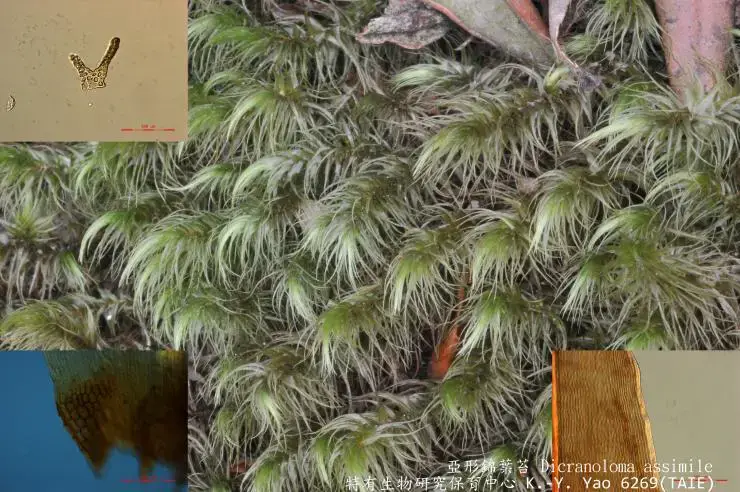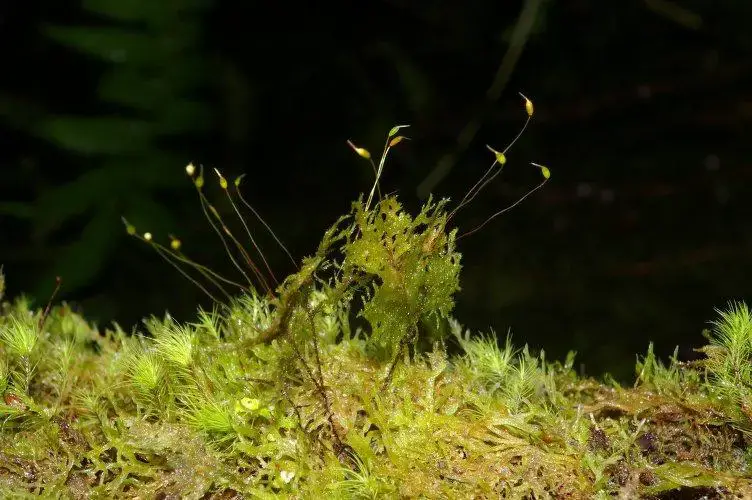
5a842260733cd3ca7a3cf63cbb1d1141.jpg from: https://openmuseum.tw/muse/digi_object/1819fc33b9c7c1ef334a81c309b3281e
Porotrichum lancifrons: The Lanceolate Moss of the Neckeraceae Family
Introduction

POROTRICHUM%2BLONGIROSTRE%2BZX.jpg from: https://plantasdepuertorico.blogspot.com/2017/01/pleurocarpicas-porotrichum-longirostre.html
Porotrichum lancifrons (Hampe) Mitt., commonly known as Porotrichum moss, is a fascinating species of moss belonging to the Neckeraceae family. This moss is known for its distinctive lanceolate leaves and its ecological roles in the ecosystems where it grows. In this blog post, we’ll dive into the details of this intriguing bryophyte.
Background
Porotrichum lancifrons is a species of moss in the Bryophyta division and Bryopsida class. It was first described by Georg Ernst Ludwig Hampe in 1865 and later reclassified by William Mitten into the genus Porotrichum. The specific epithet “lancifrons” refers to the lanceolate shape of its leaves.
Morphology and Identification
Porotrichum lancifrons is characterized by its lanceolate leaves that taper to a pointed tip. The leaves are arranged in a pinnate pattern along the stem, giving the moss a feather-like appearance. The leaves have a single costa (midrib) that extends to the leaf tip.
The stems of P. lancifrons are creeping to ascending and can reach lengths of up to 10 cm. They are irregularly branched and often form loose mats on the substrate. The capsules (spore-bearing structures) are cylindrical and borne on long setae (stalks).
Global Distribution and Habitat
Porotrichum lancifrons has a wide global distribution, occurring in tropical and subtropical regions of the Americas, Africa, and Asia. It grows on a variety of substrates, including tree trunks, branches, rocks, and soil. This moss prefers humid and shaded habitats, such as rainforests, cloud forests, and riparian zones.
Ecological Roles and Adaptations
Like many bryophytes, Porotrichum lancifrons plays important ecological roles in the ecosystems where it grows. It contributes to nutrient cycling, water retention, and erosion control. The dense mats formed by this moss provide microhabitats for various invertebrates and microorganisms.
P. lancifrons has several adaptations that allow it to thrive in its preferred habitats. Its pinnate leaf arrangement maximizes light capture in shaded environments. The thick-walled cells in the leaves help prevent water loss during dry periods. Additionally, the rhizoids (root-like structures) anchor the moss to the substrate and aid in water and nutrient uptake.
Conclusion
Porotrichum lancifrons is a remarkable moss species with a distinctive morphology and important ecological roles. Its global distribution and adaptations to humid, shaded habitats make it a fascinating subject of study for bryologists and enthusiasts alike. The next time you find yourself in a tropical or subtropical forest, keep an eye out for this lanceolate moss and appreciate its beauty and ecological significance. What other secrets might this unassuming bryophyte hold?